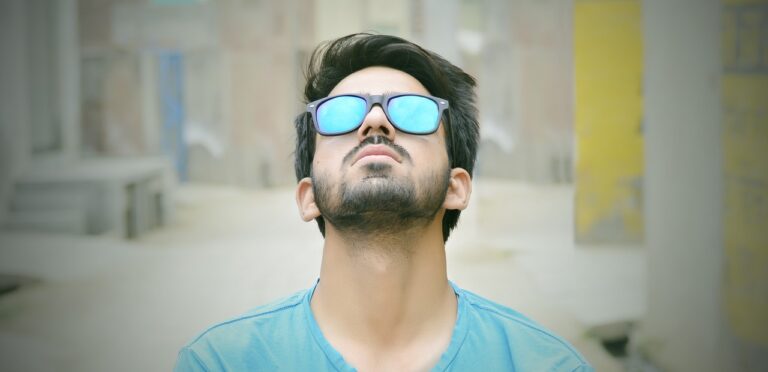ADEPTS 23: COGNITIVE ABILITIES
By William C Bushell, PhD
In the last installment of this series, we discussed adept-level perceptual and cognitive performance, no longer restricting ourselves to the subject of the somatic effects of adept-level phenomena, such as healing, tissue protection, and optimal physiological functioning – as striking, even startling, and profoundly important as these phenomena are. In the last installment, we added a dimension consisting of cognition, mental-physical performance, and putative unusual consciousness phenomena (psi, etc), while considering the potential role of bioelectricity* in this dimension and these phenomena – this latter subject now being of particular importance and significance in this series on adepts, owing to anthropological discoveries mentioned and under consideration and investigation (see recent installments, and Baker, Bushell, et al, in progress).
At the end of that last installment, we mentioned that previous work by the present author has provided a scientific model for how particular types of adepts may use adept yogic practices to access extraordinary latent cognitive resources that exist in human beings. Before proceeding to a more in-depth, detailed consideration of the nature of those yogic practices, bioelectric and otherwise, we need to give more of a sense of how strikingly profound and extensive such latent cognitive resources may be.
Much of the information about these latent cognitive resources comes from the field of autism studies, particularly those focused on so-called autistic savants. For the time being, leaving aside the consideration of neurobiological and psychoneurological mechanisms and other factors, it is important to gain a sense of the magnitude of the phenomena that emerge from this field of science (see Treffert 2009; Hughes 2012; Snyder et al 2006; Padgett & Seaberg 2014; Bushell 2009, 2016, Bushell in Padgett & Seaberg 2014).
For example, focusing on a particularly gifted autistic savant – Kim Peek, one of the principal models for the character of Raymond Babbitt in the film Rain Man – the “dean” of savant studies, Darold Treffert, MD (2009), describes a number of the actual abilities of Mr Peek, who had (at the time of the writing, at age 57)
“…memorized over 6000 books and has encyclopedic knowledge of geography, music, literature, history, sports and nine other areas of expertise… He can name all the US area codes and major city zip codes. He has also memorized the maps in the front of telephone books and can tell you precisely how to get from one US city to another, and then how to get around in that city street by street. He also has calendar-calculating abilities [in which he can instantly name the day of the week for any date in history] and, more recently, rather advanced musical talent has surfaced. Of unique interest is his ability to read extremely rapidly, simultaneously scanning one page with the left eye and the other page with the right eye [with near-perfect recall of all information contained on the pages] (my italics)….”
Daniel Tammet, an autistic savant also with a more public profile, is able to provide a completely error-free presentation of the number Pi out to 22, 514 decimal places, and also demonstrates many other such types of extraordinary (and confirmable) mathematical feats (Hughes 2012; others).
And not all capable of such kinds of feats are autistic, or suffering from neurological damage while possessing “islands of genius” (Treffert 2009). For example, there are individuals who possess what is known as Highly Superior Autobiographical Memory (HSAM) or hyperthymesia, who are capable of remembering almost every detail of every day of their entire lives, usually beginning at a given age in childhood, as determined by extremely rigorous scientific testing and investigation (see Treffert 2011; LePort et al 2017).
Another study of an individual with extraordinary visual – eidetic – memory (see for definition https://en.wikipedia.org/wiki/Eidetic_memory#:~:text=Eidetic%20memory%20(%2Fa%C9%AA%CB%88d,without%20using%20a%20mnemonic%20device), showed that it was possible for her to perfectly recall a complex computer-generated image, and successfully combine it with her own memorized image, in order to create a hybrid image from which a hidden pattern emerged. The study, conducted by researchers from Harvard, MIT, and Bell Laboratories, used a rigorous experimental design known as nonfakeable random dot stereograms to test her visual memory, and resulted in the demonstration of an extraordinary feat of visual memory:
“This remarkable performance clearly demonstrated that the eidetic visual memory of this subject had full access, “control,” of at least from 10,000 to 1,000,000 “bits” of visual information, to a “texture” or “grain” of her visual field with complete access to this highly textured visual memory; detection of the hidden and embedded organized pattern would have been impossible to achieve in the computer-generated array of randomly dispersed dots otherwise” (Bushell 2016; and see Stromeyer & Psotka 1970).
While the various specific forms of subject matter are not necessarily of major significance themselves in the context of this series, what is of significance is what might be thought of as the magnitude of the pure computational capacities – in some major ways AI-like – that exist within the depths of our brains/minds in a latent form. And whether activated by bioelectrical* or other adept means, we will in future installments consider these capacities in adept disciplines, and their relationship to understandings of the nature of existence, of the universe.
*As discussed in previous installments, we use the term “bioelectricity” as a form of heuristic shorthand for (1) what also includes bioelectromagnetism and other forms of related energy; and as (2) a working equivalent of Asian terms such as qi, prana, etc. Also as stated previously, much scientific and scholarly exegesis ultimately will still be required to adequately elucidate these terminologies.
References
Bushell WC. New beginnings: evidence that the meditational regimen can lead to optimization of perception, attention, cognition, and other functions. Ann N Y Acad Sci. 2009 Aug;1172:348-61.
Bushell, W. C. (2016). Can Long-Term Training in Highly Focused Forms of Observation Potentially Influence Performance in Terms of the Observer Model In Physics? Consideration of Adepts of Observational Meditation Practice. Cosmos and History: The Journal of Natural and Social Philosophy, 12(2), 31–43.
Hughes JR. The savant syndrome and its possible relationship to epilepsy. Adv Exp Med Biol. 2012;724:332-43.
LePort AK, Stark SM, McGaugh JL, Stark CE. A cognitive assessment of highly superior autobiographical memory. Memory. 2017 Feb;25(2):276-288.
Padgett J, Seaberg MA. Struck By Genius: How a Brain Injury Made Me a Mathematical Marvel Hardcover. Mariner, 2014.
Snyder A, Bahramali H, Hawker T, Mitchell DJ. Savant-like numerosity skills revealed in normal people by magnetic pulses. Perception. 2006;35(6):837-45.
Stromeyer CF 3rd and Psotka J 1970. The detailed texture of eidetic images. Nature.225(5230): 346-9.
Treffert DA. The savant syndrome: an extraordinary condition. A synopsis: past, present, future. Philos Trans R Soc Lond B Biol Sci. 2009 May 27;364(1522):1351-7
Treffert DA. Hyperthymestic Syndrome: Extraordinary Memory for Daily Life Events. Do we all possess a continuous tape of our lives? Wisconsin Medical Society, 2011.






